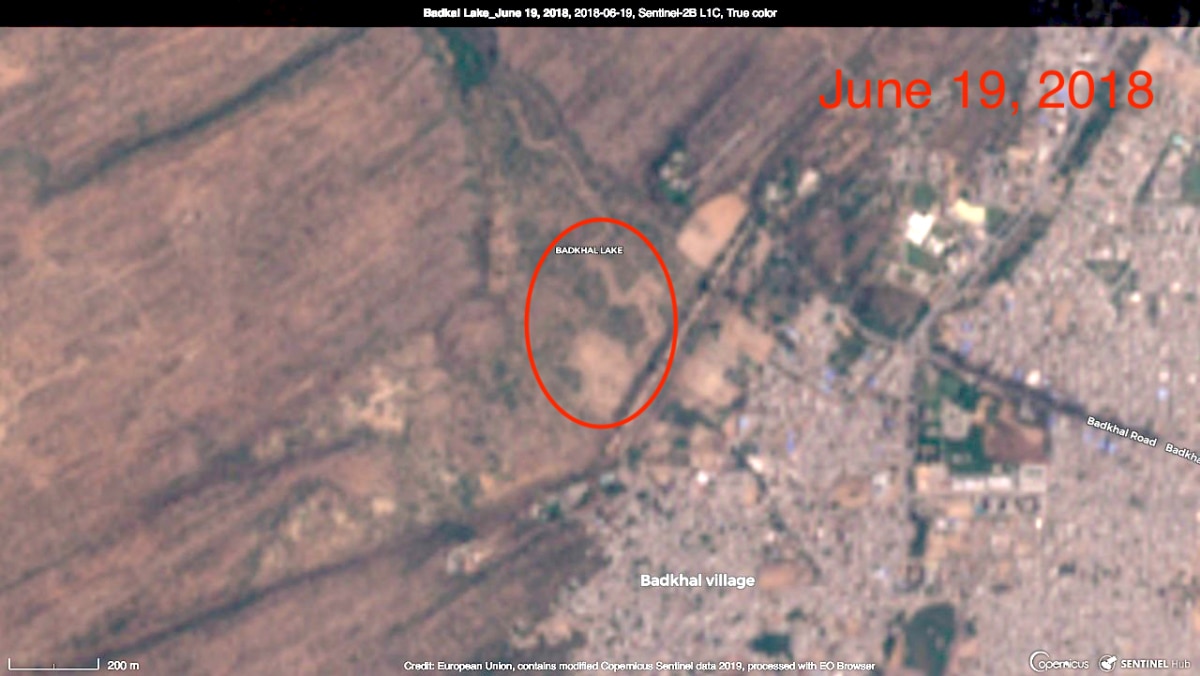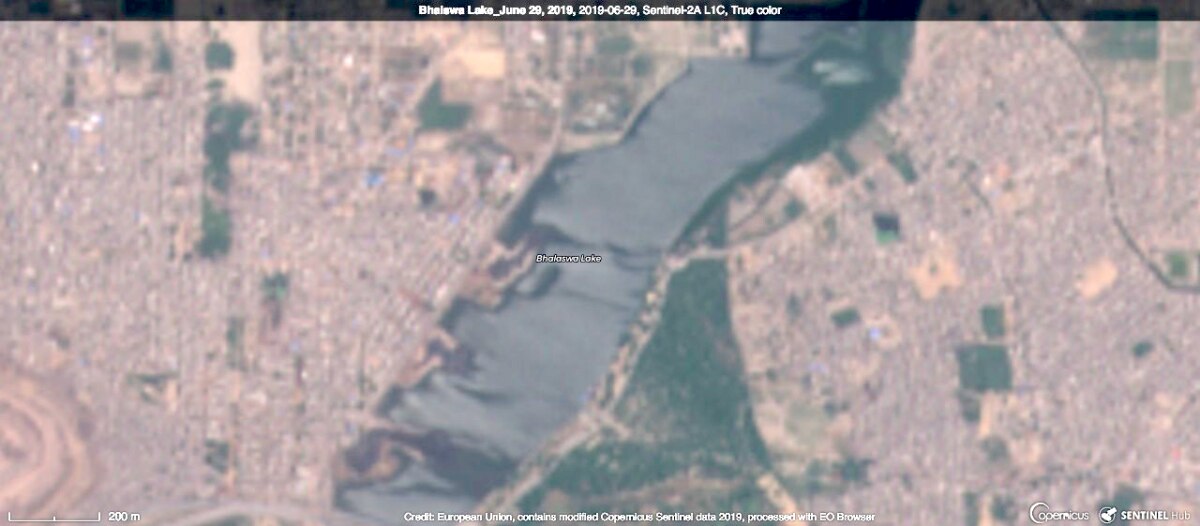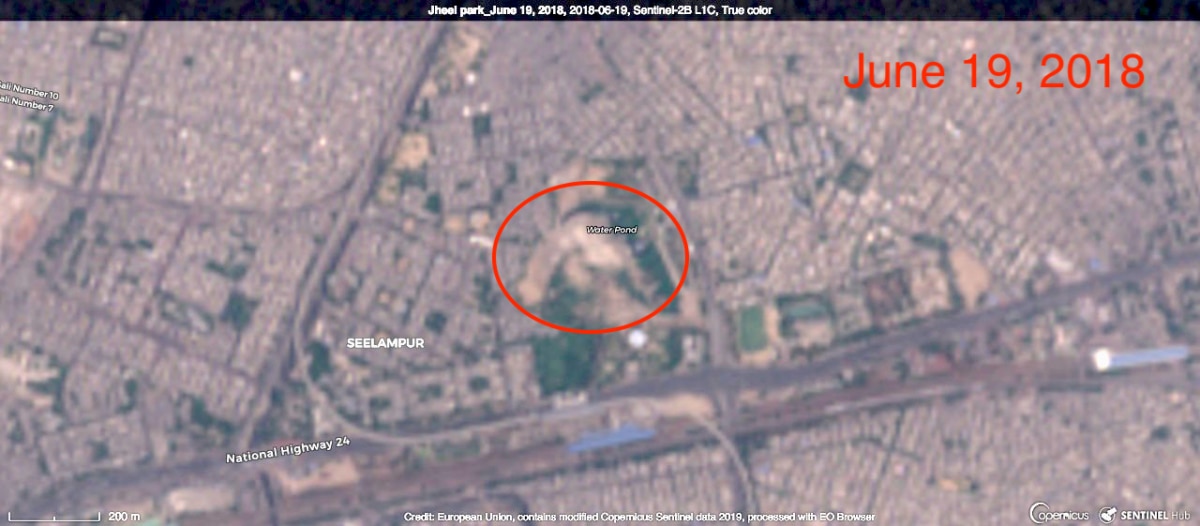Exclusive: How Delhi lost its own lakes
When India Today's Data Intelligence Unit (DIU) mapped the National Capital Region (NCR), the findings revealed ecological devastation gripping Delhi and its suburbs.

From down South to up North, rapid concretisation and unplanned development have turned many lakes of the country into a desolate spectacle, an India Today TV study has found.
International attention drew to Chennai last month after its four main reservoirs dried up completely, causing a crippling water shortage in the city.
NATIONAL CAPITAL REGION
When India Today's Data Intelligence Unit (DIU) mapped the National Capital Region (NCR), the findings revealed similar ecological devastation gripping Delhi and its suburbs.
The DIU catalogued satellite imagery over the past decade-and-a-half, showing lakes in the NCR have either vanished or have been rendered critically endangered.
Faridabad's Badkhal, once a popular tourist spot, is now a ghost of its former self, the findings show.
Hi-tech satellite images reveal its vast bed has been water-starved for more than 15 years now.
Mountain ranges of the Aravalis, surrounding this dead reservoir are also shrinking, so is their flora and fauna, experts warn.
The economic impact is just as disastrous.
"It has been many years since we saw water in this lake," a resident told India Today TV, adding, "Tourism boomed when the lake had water. It was like a mela [fair] back then. Now everything has perished. This is like a desert. We have also lost our livelihoods."
Images accessed by the DIU document dramatic dissipation of Badkhal in the past three years.


Water occurrence change intensity of Badkhal lake. (1984-1999-2000-2018)

Drones captured the extent of industrialisation, constructions, illegal mining and quarrying, which experts say have jeopardised the lake's surface water severely.
According to experts, the levels have gone down as deep as 150-200 feet.
A history chart compiled by India Today TV's DIU showed Badkhal once completely dried up in 1990; it was restored by seasonal rains for some years before its water vanished into the thin air from 2006.
The depletion is largely attributed to human activity, the decline of the mountain ranges and possibly, climate change, environmentalists say.
The landmark Surajkund, a 15-minuted drive from Badkhal, has met the same fate.
Built in the 10th century to store water, Surajkund, meaning the Lake of the Sun, has also gone missing.
Images taken by unmanned aerial vehicles showed a parched bed where once gushed the water body, one of the largest in the region.
DELHI
Six months ago, Delhi Chief Minister Arvind Kejriwal pledged to turn the capital into a "city of lakes".
In a December 24 tweet, he painted the NCR's dying lakes in a rosy hue.
"Delhi will become a city of lakes," Arvind Kejriwal wrote. "It will reduce pollution, recharge groundwater, make our city beautiful. All these lakes will be developed into tourist places...," he envisioned.
· Delhi Jal Board approves Rs. 376 crores for rejuvenation of 159 lakes all over Delhi.
· DJB also approves Rs. 77 crores for the creation of two mega lakes in Rohini and Nilothi.
· Approval in line with the vision of CM @ArvindKejriwal to rejuvenate 200 lakes all over Delhi Javed Khan (@Iam_JKhan) December 24, 2018
But India Today TV's survey showed the Delhi government's ambitious lake-rescue mission might have sunk.
Satellite imagery illustrates that water-bodies in the city have succumbed to rapid concretisation and mismanagement of resources.
An indescribable stench drifted in the air when India Today TV reporters visited Bhalswa, once a major source of water on the Yamuna's northern floodplains.
Also called the Horseshoe Lake because of its shape, Bhalswa in North Delhi has drowned in pollutants, the ground report found.
Worse, satellite imagery shows how the water body has shrunk within months.
Mapping of Bhalswa reveals disturbing signs; the red marks on the imagery denoted how the lake has lost its water consistently over the years.


Water occurrence change intensity of Bhalswa lake. (1984-1999-2000-2018)

Source: Global Water Explorer
Waste from a landfill in the neighbourhood has turned this fast depleting body into a toxic stretch, the report suggests.
An unwelcome sight greets visitors at Shahdara's Welcome Jheel, which appears to have been a victim of urbanisation.
Imagery shows how the water body declined because of construction in the past three years.
India Today TV's data mapping revealed the area received seasonal water until 1998. The early signs of drying up emerged a year later.
Housing, a metro station and random construction changed the landscape phenomenally thereafter, the report found.
A Rs 22-crore project to restore the Welcome Jheel dried up before taking off, according to local residents.


Water occurrence change intensity of Welcome jheel. (1984-1999-2000-2018)

"The water here has dried up. For years, municipal authorities have been speaking about replenishing the lake and setting up a park. That didn't happen," a resident complained.
Proposed by municipal authorities in East Delhi six years ago, the lake-revival plan has yet to see the light of the day, the findings reveal.
It's a similar story at East Delhi's Sanjay Lake -- metro construction around, livestock grazing on its dry bed and an unkempt stretch of ecological waste.
The lake, experts say, has lost its migratory birds with its surface water receding.
To residents, the Sanjay Jheel doesn't resemble a lake anymore.
"There was a time Sanjay Jheel used to have water up to the knee. But today it has become dry land. We are seeing the lake die but we have never seen any maintenance," said a man living in the area.
Data mapping reveals the Sanjay Lake dried up thrice since 2006.


Water occurrence change intensity of Sanjay lake. (1984-1999-2000-2018)

In Delhi's Vasant Kunj neighbourhood, India Today TV found what is now a leftover of Kishangarh Johad, which was formerly a water reservoir.
Concretisation in the neighbourhood has cut off its supply lines, the report discovered.
Encroachments make it difficult for any natural source to find its way into the reservoir.
Of 611 water bodies in the national capital, 274 have already dried up and as many as 190 lost forever, the official data show.
But the situation in South Delhi's Satpula Dam and Lake testify to persistent neglect.
Concrete structures and parks have been allowed on the reservoir's dry bed, the ground report found.
For residents, the Satpula lake is distant history.
"We have only heard stories of this lake from our parents. They tell us how this used to be a beautiful water body at one point in time but all we have seen is a barren land and it is so disappointing," a local resident regretted.
Revived but left unmaintained -- that explains the status of the Neela Hauz lake in South Delhi.
India Today TV's ground report found the water body is fast becoming a dumping ground again.


